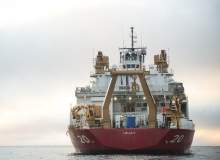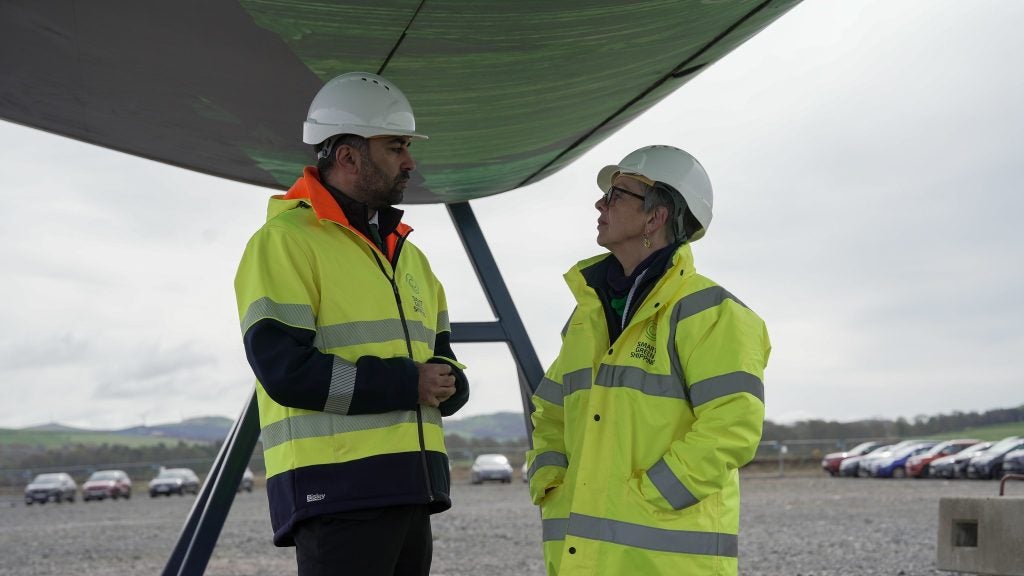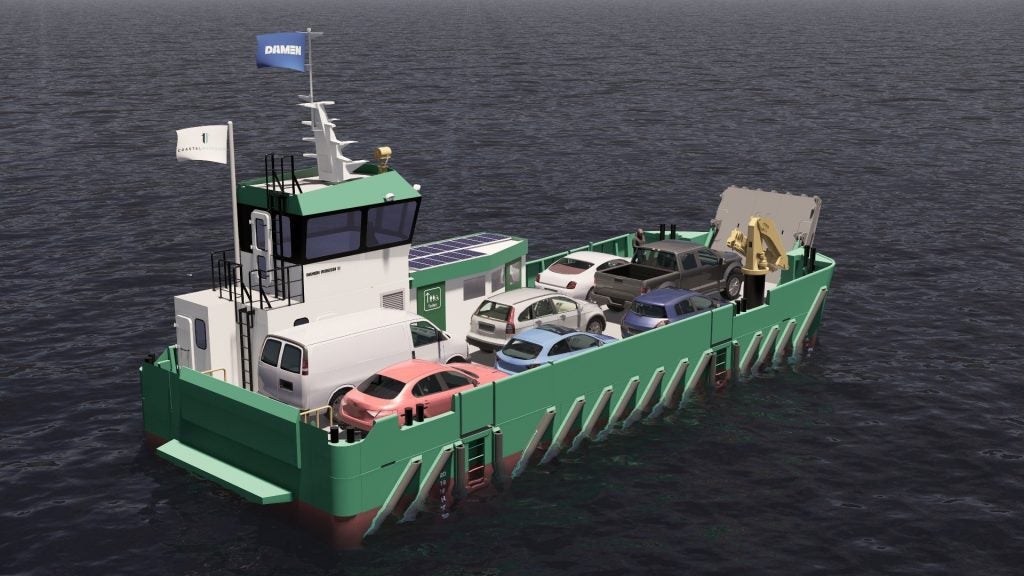

Climate change might be the most serious challenge facing humanity in the 21st century, but in shipping circles, tongues have been wagging for years about how global warming is increasing the potential for greatly expanded maritime trade through Canada’s Northwest Passage.
The passage, which has a history of human navigation since the mid-19th century as explorers sought a new sea route connecting the Atlantic and Pacific oceans, has remained mostly closed to marine shipping virtually year-round due to the dangerous and unpredictable presence of Arctic pack ice.
Arctic traffic on the rise
Since 2009, however, the traceable summer retreat of pack ice has been making the Northwest Passage navigable for longer stretches of the summer. This growing window of opportunity could bring significant benefits to global marine trade by facilitating much faster shipping times between Asian markets and Europe or the east coast of the US when compared to transit times through the Panama Canal. In short, if the Northwest Passage becomes a truly reliable Euro-Asian summer sea route, it could re-write the global shipping map, at least for a few months a year.
Sporadic ship journeys have been undertaken through the Northwest Passage since 2000. But in the years since the first commercial vessel – the MV Camilla Desgagnés – navigated the Northwest Passage in September 2008, shipping companies have been increasing their use of the sea route in the summer months, particularly in August and September when Arctic sea temperatures are at their warmest. Between 2004 and 2016, vessel traffic through the route increased by 166%.
With climate change potentially fuelling further growth in traffic through the Canadian Arctic – traffic could double again by 2020, according to data from the Office of the Auditor General of Canada – there is an obvious question: is Canada up to the task of regulating summer shipping through this unpredictable stretch of water in a way that adequately protects ships, the environment and local communities?
How well do you really know your competitors?
Access the most comprehensive Company Profiles on the market, powered by GlobalData. Save hours of research. Gain competitive edge.

Thank you!
Your download email will arrive shortly
Not ready to buy yet? Download a free sample
We are confident about the unique quality of our Company Profiles. However, we want you to make the most beneficial decision for your business, so we offer a free sample that you can download by submitting the below form
By GlobalDataImproving oversight in the Canadian Arctic
According to a new report by the Pew Charitable Trusts’ Oceans North Canada group, the answer to this question is currently a resounding no.
“Ships traveling in the Arctic pass through a complex marine environment that comprises critical habitat areas, including many passages where the activities of birds, marine mammals, fish, humans, and ships converge,” noted a statement accompanying the report, which was published in April 2016.
“The Canadian government’s existing management of Arctic shipping does not sufficiently account for the environmental and social complexity of the region. For decades, government departments, academics, and civil society groups have made recommendations for reform. However, Canada still lacks a clear, cohesive vision for Arctic shipping policy.”
The report specifically highlights the groundings of the cruise ship MV Clipper Adventure and supply tanker Nanny on the Arctic Archipelago in the summer of 2010 as demonstrative of the country’s inadequate oversight of the region, as well as the human and environmental risks (Nanny was carrying 9.5 million litres of diesel fuel) of shipping disasters in the frigid waters of the Arctic.
The Integrated Arctic Corridors Framework
The solution? Oceans North Canada is recommending the establishment of the Integrated Arctic Corridors Framework, which would introduce to the region a system of tiered shipping routes according to assessed risks that – along with other recommended measures – is intended to provide benefits to the shipping industry, the environment and indigenous Inuit communities whose livelihoods often depend upon a healthy and abundant sea.
The Integrated Arctic Corridors Framework is a policy designed to extend and strengthen a previous attempt by the Canadian Coast Guard to establish safety oversight for ships in Arctic waters. The Northern Marine Transportation Corridors Initiative (NMTCI) was launched by the Coast Guard in 2012, also centred on setting up marine corridors that would allow the Coast Guard to focus its resources on ensuring safety in pre-established lanes. Oceans North Canada’s proposal adds a more comprehensive perspective with the inclusion of environmental and social impact assessments.
“The NMTCI has the potential to be the foundation for a national Arctic shipping policy; but for this to happen, the corridor initiative must be widened to account for the environmental and social complexity of Canada’s Arctic Ocean,” the report reads.
So these integrated corridors would not only provide focus points for the Coast Guard to monitor vessel safety, but also to safeguard the marine environment, as many common shipping routes through the passage overlap with sensitive wildlife habitat, playing host to the majority of the world’s beluga and bowhead whales, narwhals and polar bears, as well as massive mammal and seabird migrations. The Canadian Arctic Ocean also links Canada’s four settled Inuit land claim territories and 53 northern communities, and the report is recommending that human input – especially from Inuit communities – should be the third pillar of Arctic policy, along with safety and environmental protection.
The tiered system ranks corridors according to three categories (low risk, medium risk and high risk) based on the potential impact on vessel safety, traditional human activities and fragile eco-systems. The system would be overseen by a new management body, the Arctic Corridors Commission, and could greatly help in the allocation of central resources to ensure that shipping in the most at-risk areas is subject to the strongest supervision.
The proposal would also reinforce the International Maritime Organization’s mandatory Polar Code, which is set to come into force on 1 January 2017. The Code requires ships that will operate in polar waters to apply for a Polar Ship Certificate, which will only be granted if the vessel is capable of dealing with first-year sea ice, has a properly trained crew and can prevent pollution from the discharge of oil, noxious liquids and other contaminants. While the Polar Code mandates on the design and operation of ships themselves, the Integrated Arctic Corridors Framework could complement the Code by bringing intensive region-specific knowledge and providing resources based on the particular sensitivities of different shipping lanes.
Counting chickens: how much could Arctic traffic grow?
As useful and well thought-out as Oceans North Canada’s framework is as a starting point that other Arctic nations could emulate, are we getting ahead of ourselves in planning for a significant surge of Arctic traffic in the coming years? The 166% increase in ship traffic between 2004 and today sounds dramatic, but this rise is from a tiny base. In terms of raw numbers, there were just over 350 voyages in the Canadian Arctic in 2015, compared to approximately 14,000 ships that pass through the Panama Canal every year.
The number of ships that make the journey through the Northwest Passage is also highly variable based on seasonal conditions, making it very difficult to predict future traffic growth trends. In 2012, for example, 30 ships (a record number) sailed the full length of the Northwest Passage, but the number dropped to 17 in 2014 due to colder, harsher conditions that shortened the summer window that year. Many observers are striking a note of caution on when Arctic shipping traffic might hit a ceiling or start declining. The Northern Sea Route, the stretch of Arctic waters off the northern coast of Russia that has been going through a similar process of opening up to shipping as ice recedes, hit a peak of 70 transiting ships in 2013, but traffic has declined since then.
A new study published by Hugh Stephens, former Canadian diplomat and executive fellow of the University of Calgary’s School of Public Policy, highlights the many factors that will likely restrain the Northwest Passage’s development as a shipping route, including shallow drafts blocking many routes from being used by large vessels, shortages of icebreakers, unpredictable ice conditions and low global fuel prices minimising the extra cost of taking the safer, longer way through the Panama Canal.
“There was a great flash of enthusiasm but the facts haven’t really borne this out,” Stephens said in a May 2016 interview with Radio Canada International. “In fact, shipping levels reached a peak in 2013 and they dropped from there.”
So there are many self-limiting factors that could dramatically hold back the Northwest Passage from becoming a full-fledged international trade lane in the summer months, at least for the foreseeable future. Nevertheless, given that the trend is gradually moving towards more extensive use of Arctic waters for maritime trade, the Integrated Arctic Corridors Framework is playing an important role in laying out the broad structure of what future oversight of shipping in these sensitive regions might look like. Whether Canada can capitalise on the momentum of these policy proposals, and whether other Arctic nations follow suit, remains to be seen.





